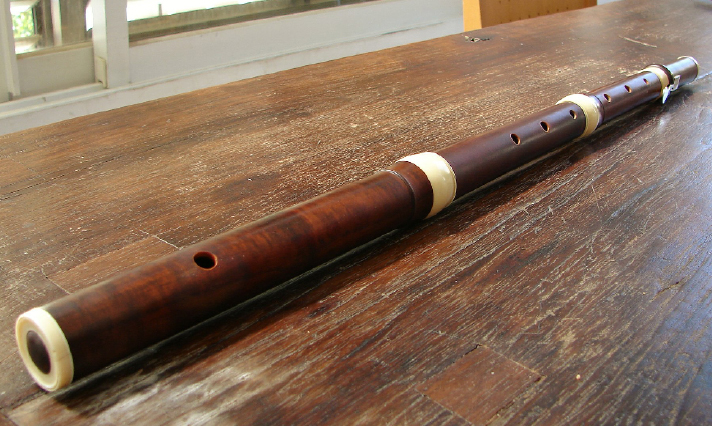
The baroque era traverse flute – made of wood and lacking keys – is often referred to by an Italian name, “traverso,” to distinguish it from modern concert flutes. This is a traverse-blown flute, with the mouthpiece on the side. The traverso became increasingly prominent in orchestral music throughout the 16th and 17th centuries.
The baroque flute head joint starts straight and gradually tapers towards the end of the instrument. Unlike modern metal flutes, the bore constantly changes in diameter and is not the same for each hole. There are only eight holes, and they are not equal in size or spacing. While playing a chromatic scale, one can hear the differences between the cross fingerings on the instrument, where some holes are open, and others are closed, producing inherently softer and weaker notes.
Although some notes on the flute may be weak or mellow, the stronger notes do not necessarily need to be played in a more mellow way to match them. Depending on the key in which the music is played, the combination of weak notes changes, and it is important for the musician to adapt accordingly. With a historical flute, music in E-flat major would not sound the same as E major, because the strong notes occur in different places within the scales.
Today, pitch has been standardized to A440 so musicians can play together easily anywhere in the world. Modern musicians tend to play Baroque music at 415, one semitone lower than A440. However, in the 18th century, pitch was never standardized, so from London to Paris to Berlin to Italy, one could hear very different pitches. Composers like Bach, Handel, Vivaldi, and Telemann what have written very deliberately for specific flutes, choosing keys that would result in the tone colors they envisioned.
The baroque flute possesses an extremely supple and flexible sound. It is capable of great nuances of dynamics and flips easily from one register to another, a characteristic that makes much baroque flute music easier on the original than on the modern flute.
Source: Tonebase